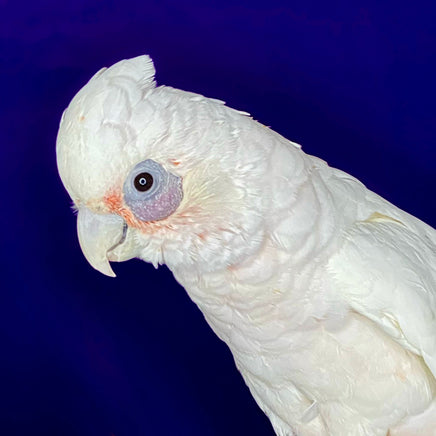
Little Corella (Bare-Eyed) Cockatoo
Scientific Name: The little corella bird is scientifically known as Cacatua sanguinea. It belongs to the Cacatua genus, which comprises 21 species of white cockatoos. There are four subspecies of the little corella: C. s. sanguinea, C. s. normantoni, C. s. transfreta, and C. s. gymnopis.
Physical Characteristics: The little corella is a small white cockatoo with a short bill and a bare blue eye-ring. It has a wingspan ranging from 35 to 41 cm (14 to 16 in) and weighs between 370 and 630 g (13 to 22 oz). The bird has a pink patch on its forehead and lores, as well as a yellow wash on its lower ear coverts. The underside of its flight and tail feathers may have a slight brownish tinge. Both males and females have similar appearances, although females are slightly smaller.
Habitat: Little corellas are native to Australia and southern New Guinea. They can be found in various habitats, from arid deserts to coastal plains, but they tend to avoid dense forests. Additionally, they can be seen in urban areas, where they feed on lawns and playing fields. These birds are nomadic and adaptable, moving to different areas depending on food and water availability.
Behavior: Little corellas are social and noisy birds that form large flocks, sometimes consisting of several thousand individuals. They often associate with other cockatoo species like galahs, sulphur-crested cockatoos, and red-tailed black cockatoos. They roost in trees overnight and fly to feeding areas in the early morning and late evening. Their diet mainly consists of seeds, grains, nuts, fruits, roots, and bulbs, but they can cause damage to crops and trees. They are known for their intelligence and playful nature, being able to mimic sounds and perform tricks.
Lifespan: Little corellas can live up to 50 years in captivity, although their lifespan in the wild is uncertain. They are monogamous birds that form long-term bonds with their mates. Breeding occurs once a year, typically between July and December, and the female lays 2 to 4 eggs in a tree hollow. The incubation period lasts around 24 days, and the young birds fledge after 7 to 8 weeks.
